-
Posts
248 -
Joined
-
Last visited
Posts posted by Boris Belay
-
-
-
The CP Viewfinder has the same mount as the removable Angénieux VF of the ACL (and both kinds of NPR viewfinders).
The Original ACL Angénieux viewfinder is not removable (unless you use tools), so they are not compatible.
The mount for the later ACL Kinoptik viewfinder is also not compatible.
Optically, I'm not sure. Aapo's hand-held test may be correct, but hard to tell without an actual mount.
Below is the part you would need.
-
Cinema Products used the same VF mount on their reflex models, so the CP viewfinders are compatible with NPRs as far as I know (no first--hand experience).
ACL VFs are not compatible (wrong optical distance to the Ground Glass), although Eclair USA sold the Kinoptik NPR VF for the ACL with an adapater ring (it's an option mentioned in one of their Price List from the mid 70's). Which means the distance is longer on the ACL, so conversely there is no way to adapt an ACL VF to a NPR.
-
On 10/15/2023 at 1:37 AM, Duncan Brown said:
With that off, I can see the drive assembly cover but the gears are inside it. Taking off the cover with two screws and then the solid machined piece, which also holds the drive spigot, reveals that it's a worm gear in bearings on the spigot and a gear on the back of the thumbwheel. And now everything spins just fine. I clean it up, regrease it, put it back together loosely and everything is still spinning fine. It's not really obvious what was jamming it. I tighten down the screws to the machined piece and... jammed. I loosen it up a bit, notice that there's a tiny bit of play in it. If I shove it down towards the bottom of the mag it's jammed. If I shove it up towards the top of the mag it spins freely. So I push it to that side and crank down on the screws and all is well. NOT a big fan of a design where a piece is loosey-goosey like that, and where, say, a sharp blow (like dropping the mag) would allow things to get jammed. But now I know. (And so do you!) I put everything back together and now it works perfectly.
Duncan, the 'loosey-goosey' design that you are complaining about is an intentional one which allows you to adjust the interplay of the meshing gears to your 'liking', depending on your grease, for instance, but mostly to minimize noise and power draw. The same adjustments are possible on the camera body on the axis that drives the shutter (back of the main plate, so visible without removing the main plate from the body).
When I adjust an ACL, I always use an amp-meter to set it to the least current draw (and noise). This also holds when resetting the motor-bearing plate (the 4-screw plate onto which the motor attaches).
-
 2
2
-
-
On 10/15/2023 at 6:46 PM, Duncan Brown said:
The ACL (and, I believe, every other camera on the planet OTHER than the A-Minima) uses B-wind. The A-minima needs more than just A-wind film, it needs those goofy reels. And unless Kodak is supplying it on those reels, it seems pointless to care how the film comes for an A-minima, since you're going to be respooling it onto your own existing A-minima reel anyway, no?
The NPR mags can actually be loaded with EI (normal) or EO film. But does that mean it can also be loaded with A-wind film? My brain hurts trying to figure that out, but it's academic in terms of your question, since there are no 200' NPR mags anyway (that I know of).
Duncan
The ACL magazines also take either winds, you just need to make sure the perforations are towards the bottom of the magazine when you load them in your bag. Then the film either unwinds clockwise or counter-clockwise. Both work fine, as discribed in the manual.
Now, if Kodak were to make those A-minima rolls again (or if you were to get on aold stock of them), remember that they can be used in both NPRs and ACLs, since you can pull out he plastic flanges and you get a normal Kodal film core.
-
-
-
As far as I know, NPRs came with 60m. platers only. The 120m. ones were introduced with the ACL (120m. mag), but I don't think they were adopted into the NPR even then. The 60m. platters work fine with 120m. loads, even on the take-up side.
Regarding foam, it looks like you did a good job on the magazine fronts. Regarding the sides, i believe (but again, the NPR is not my specialty) that the material was faitly strong rubber, not foam. As a result, the doors must be pushed quite ard towards the front to close, ensuring a tight fit where it's needed. In fact, I think I remember seeing those side strips made with a slight overhang (so not a square section) under which the door fits.
Obviously, this late in the Ecliar game, anything that works will do. But best to know what they started with.
-
Thanks Aapo, Now I can see how it looks on the camera.
A few questions : does your system accept standard 12 Volt batterties ? I see "18 to 20 Volts" inscribed on the connecting box.
How is mirror inching done ? Is there a system in the motor that brings the mirror back into shooting place ? And if not, is there an inching knob, or do you need a tool (screwdriver,...) ?
Where can you get spare connectors for the cables of your system ? I see that they are not Tuchel or Lemo connectors.
Is it possible to have the connecting box orientated differently so that the power and control cables point towards the back or the bottom for better ergonomics ?
Also, but this is a more general question, since the connecting box is just that, why did you not opt to have the control box attached to the back of the motor unit, the way the origina ACL motors were designed ?
-
On 6/20/2023 at 3:57 AM, Duncan Brown said:
Well I had a brilliant idea. (Actually, Eclair had the brilliant idea, because this is just how it's done on my ACL 400' mags...) A piece of round stainless wire glued in the channel meets all the needs. Minimum surface area for the film to ride against, and conductive so no static buildup. The original plastic pieces are precisely 2mm tall, so 2mm diameter wire it is! I got a pack of 50 12" wires (enough for 20 lifetimes...) from McMaster Carr and just cut each one to the length of its respective channel, and glue it in with Pliobond. I wait a day, then polish the top surface with 4000 grit sandpaper, which makes sure it's shiny and smooth, and removes any Pliobond I got where it wasn't supposed to be.
See pics of the resulting setup. Quick, easy, cheap repair, what more could you ask for?.
Duncan
Good one ! That is indeed the preferred option, introduced by Eclair in their later cameras.
Aaton also did it that way, so it must be good !
-
Regarding ACL mags, only the last series (SDxxx) have the newer kind of pressure plates. They were realeased with ACL IIs (or possibly just before, when the taller 2-part base was introduced (but still Angénieux VF). 60m. mags were just labeled 'Dxxx".
The incremental series system A/SA, B/SB, C/SC, and D/SD each introduce minor modifications to the (French-built) mags, like improved 2-roller film-path (B/SB and later) and the new pressure plate (D/SD).
I don;t know the NPR mags as well, but the 2-part pressure plate was introduced earlier than on the ACL, on the mags that bear the mention "Eclair 16 II" on the plate. I imagine that other changes were introduced on the body and mags then, although, again, I am not as familiar with the NPR. Oddly, there is no mention of an Eclair 16 II model in any of the officila Eclair litterature I have seen (unlike the ACL II, which is mentioned of course).
And for those who are tempted, no, the pressure plates of the NPR mags are not compatible with those of the ACL, despite being very very similar...
-
Hi Aapo, Do you have images of the complete 12-speed kit mounted on a camera ? I'm wondering about the ergonomics.
Thanks, Boris
-
I wonder if it's a British-made camera, in which case, the body's serial would be engraved next to the film gate, on the left casing.
And perhaps the serial mentioned by the orginal seller is the one of the motor ? That's engraved on the back of the motor casing (DEM xxx).
The image on the film is not affected by the viewfinder : there is nothing between the lens and the film during exposure on an ACL (and most reflex 16mm. cameras, except Bolex H16s). A distortion, mark, or lack of sharpness in the viewfinder only affects your shooting comfort (and alternatively, your viewfinder needs to be precisely matched to your flange focal distance (lens to film) to allow you to focus and frame properly).
-
-
Hi Sam,
The good news is that your ACL is officially an ACL II... The not-so-good-news is that it lost the features that made it an ACL II (such as the two-part large electrnics base and large Kinoptik viewfinder), making it essentially a 1976-features ACL.
The bet news (probably) is that its Super-16 conversion seems to have been done seriously enough, which seems to explain why the viewfinder has been slanted with an insert: it should now be better centered onthe super-16 image on the ground glass. It's a modification I had never seen, but it makes sense, so long as the ergonomics of the camera are not too impacted (I suspect not).
I see that the listing for this camera is not on eBay anymore. Did you buy it ? Is it in running order ?
-
Hi Sam, It's very difficult to date this camera without knowing its serial number. ACLs were built between 1971 and the early 80's, and many were modified over the years, so dating a camera by features alone is not possible (some minor details help, but they are not visible in that picture). The Angénieux orientable viewfinder dates from the 1976-1979 period, but it was easy to add to an earlier camera, so that does not help.
The Soremec sticker was stuck on later, they were never on cameras that came out of the factory. Soremec was the French parent company to Eclair from 1974 on, but the cameras only ever had Eclair ACL stickers. This one has many non-Eclair accessories added, which adds to the confusion.
More pictures (and of course, a serial number) would help.
-
Indeed, it looks like an early model, and perhaps a prototype (P0065 ref.). Obviously it does not have the variable speed, just the 24/25 fps option. Maybe it was designed as a single-speed cheaper model? Aaton were always coming out with new things, experimenting, tweaking, etc., and not everything made it into production. If somebody else (than Aaton engineers) modified it, they certainly seem to know what they were doing (very clean casing).
The motor is most certainly supposed to be crystal-synched. Aaton would not have bothered to make a wild motor that late in the game. Have you tried both speeds (by switching the screw next to the 24/25 engravings) ? Maybe one of them works. Their early LTR motors had the same screw system to set the crystal-synch speed.
Regarding the name, I always thought it meant the motor went up to 54 fps (like the LTR 54), but obviously that's not the case. As for 'ALCAN', that's an Eclair denomination, like BEALA (which stands for BEAviaLA, I believe), but I can't figure it out, except for the A of Aaton.
Aatached, some info froma brochure I found somewhere onthe web:
-
-
-
-
Joao, There is a lubrication chart in the back of the Cameglex manual. Have you look at it ? It's rahter important for these older cine camera, which require frequent lubrication.
I would use any decent fine oil, as the chemical industry has made substantial progress in the many decades since the Cameflex was introduced. A few drops should do.
Marek, nice strip down pdf. I have a fair bit of Cameflex parts, in case you ever need something to keep yours running. I focus mostly on ACLs...
-
 1
1
-
-
Hi Gregg, Interesting question... This is the issue that Aaton tried to solve with the basic design of the LTR: moving the VF forward so that the camera sits further back on the shoulder to better distribut the weight of the camera. On the LTR, Beauviala elected to have the VF come out of the top ot the camera and forward from there (and this was the reason for the patents trial by Arri, who claimed the design was a copy of the SR VF).
Short of re-building the ACL completely to take on an LTR VF assembly, with carrying handle, while you're at it (and that may well be the easier route if you don't have access to a metal-working shop), your solution is the obvious one. It seems theoretically sound, except that you can count on the optical elements to be at least as thick as the ones in the front assembly of your Kinoptik (or Angénieux) orientable VF. If you look at your drawing, that formard (left-eye/right-eye orientation) part does what you need, except one of the elements should be inverted. Since the ground glass image is translated at a constant size, you can count on the optical blocks being as thick. This, in turn, poses the question of the position of your modified viewfinder relative to the body of the camera (and the head of the operator).
Obviously, you would also have a slight light-loss from adding optical elements in the path, but if they are well-built, it should be nominal.
-
 1
1
-
-
10 minutes ago, aapo lettinen said:
it matters when determining if the loops are correctly set or if there is other mag related issue. so running just some seconds at low speed is generally done on any camera to hear that it is working correctly and good to go for normal speeds
Yes Aapo, if you don't know the camera, or if you are servicing it. But once you know that your camera is functional, and you have loaded your mags properly, you can just pop in a mag and run the motor at any speed.
I never bother switching the motor to low speed for a new mag, especially if I'm worried about film noise, since only my actual shooting speed will let me know about the noise level for that shot. But I do always, of course, run the camera a couple of seconds to check the loop noise.
Now, anybody can be as careful as they want, obviously, but from a long and extensive experience with ACLs and other film cameras, all I am saying is that it's not a necessity. And if you're going to miss that shot that's happening there and then, it would be a shame ! ?
-
 1
1
-
-



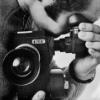

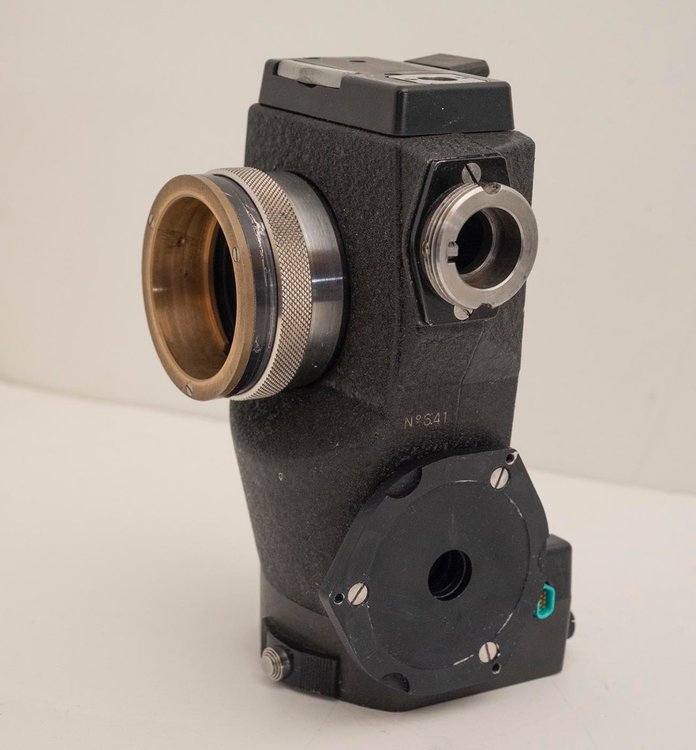
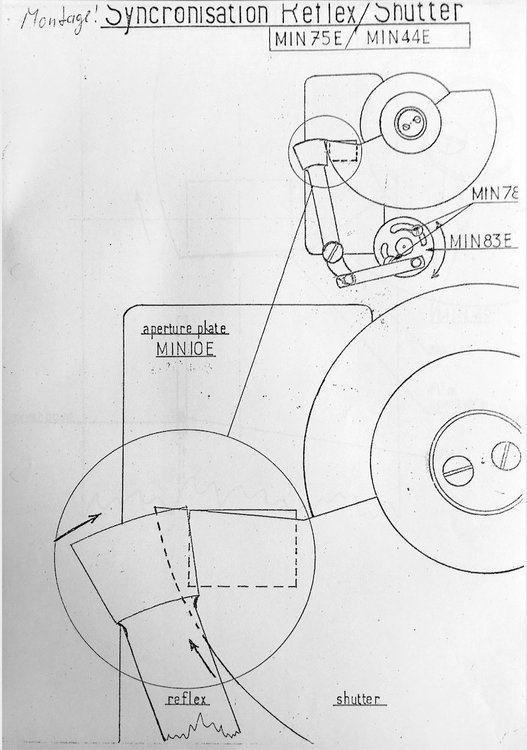
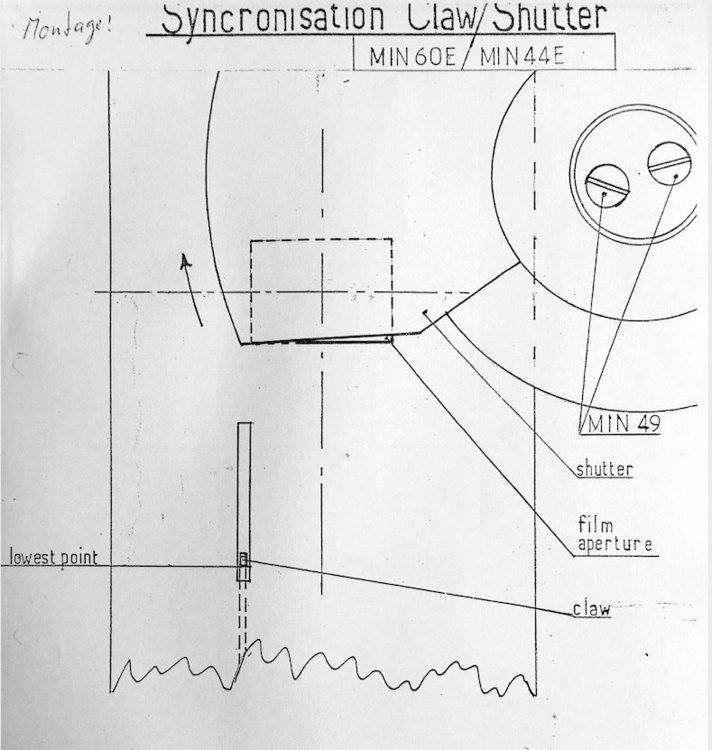

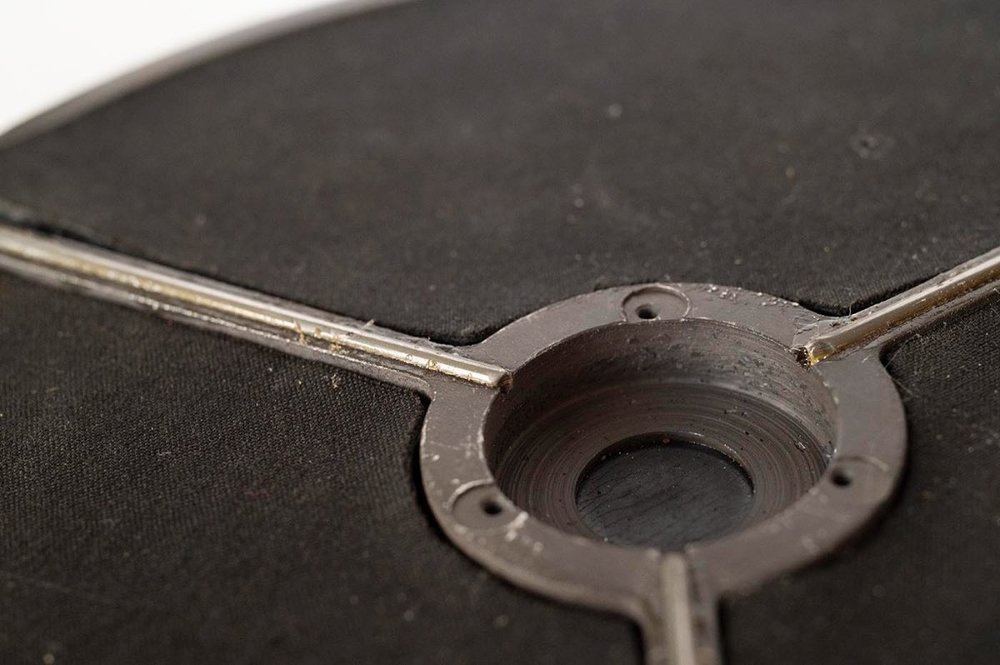
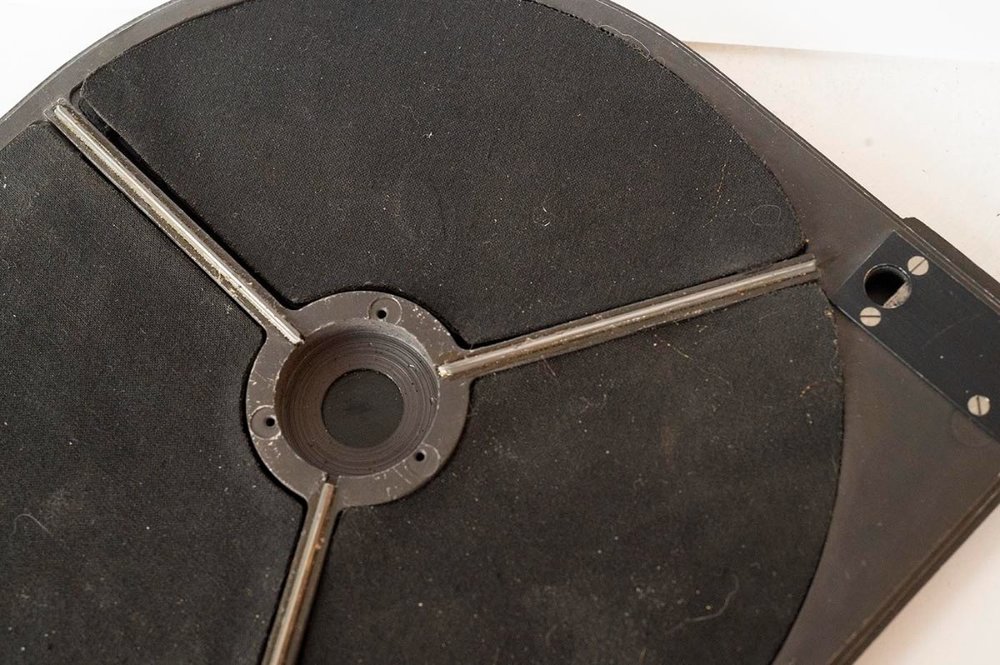
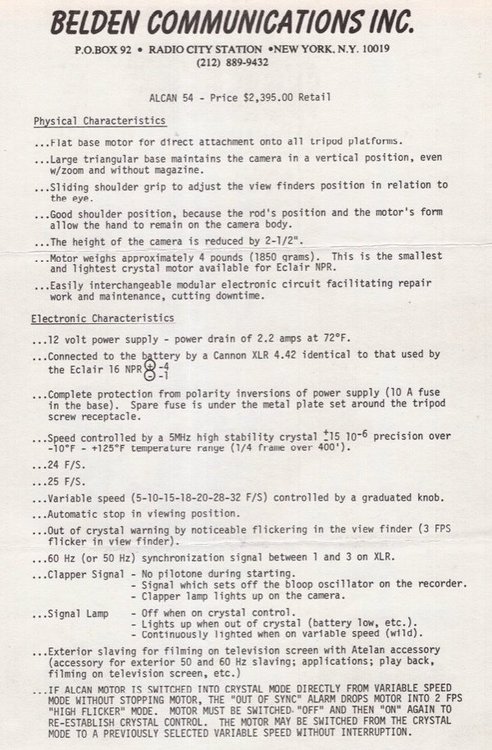



Adapting a CP-16 viewfinder to an Eclair ACL
in Eclair
Posted
Duncan, I have to believe you on this one and I stand corrected. Forget what I have said about the ACL viewfinder !
I believe the NPR and CP viewfinders are swappable...
Sorry about the confusion!
Boris